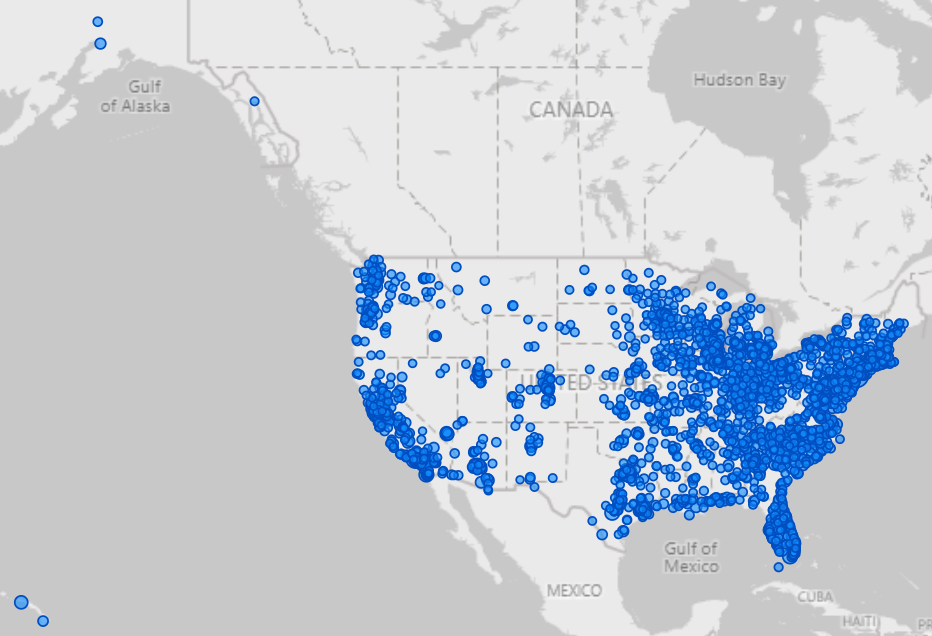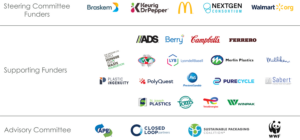“The Polypropylene Recycling Coalition brings stakeholders to the table to have good, hard, challenging conversations. And, we’re walking away with strategy.” - Stephanie Baker, KW Plastics

About the Polypropylene Recycling Coalition
The Recycling Partnership launched the Polypropylene Recycling Coalition in 2020 with a single goal in mind — unlock the potential of a 2-billion-pound opportunity to capture and recycle more polypropylene. The Coalition brings leading industry stakeholders together to exchange ideas, provide funding, and take collective action to address the recycling challenges of this material that is part of daily life, used in everything from yogurt cups to butter tubs to beauty product packaging. Its unique performance properties for protecting and transporting products means it has massive potential in the circular economy, but only if it stays out of the landfills.
To unlock the recycling potential of polypropylene, the Coalition prioritizes three key areas:
- Increasing access to residential recycling for polypropylene
- Ensuring more recycling facilities can successfully sort polypropylene
- Supporting responsible end markets with a steady supply of recycled polypropylene for reuse in packaging
It All Starts at the Curb
No material can be reclaimed if residents do not know where to put it. Only 60-65% of people across the U.S. have access to recycle polypropylene, and only 30% of polypropylene used in consumer products is recycled. Part of the Coalition’s ongoing mission is to increase community engagement and education to ensure the right material gets placed in the right bin. Through the Coalition’s efforts, 48 million more people across the U.S. now have access to recycle polypropylene.
Supporting the Recycling Facilities
The Coalition works toward targeted system change and on-the-ground action by providing grants and technical expertise to recycling facilities to increase access to the ability to efficiently sort key polypropylene formats. To date, the Coalition has awarded $13 million in grants to over 51 recycling facilities across the country to upgrade their infrastructure to better sort polypropylene, resulting in more desirable material to resell to new markets.
Creating a More Valuable End Market
Recycled polypropylene can be turned into new packaging, housewares, buckets, gardening supplies, and more. The final piece of the puzzle in making polypropylene widely recycled is ensuring there is a healthy market for all that reclaimed material.
Results by the Numbers (as of June 2024)
-
To date, 58 recycling facilities received $14.5 million in grants to support new and improved polypropylene sorting.
-
Since the Coalition’s founding, we’ve ramped up community recycling education efforts, impacting 48 million people.
-
57 million new pounds of valuable polypropylene recovered annually for processing in growing domestic markets.
-
Map: Residential recycling access for polypropylene bottles, jugs, jars, and tubs.

Results Achieved When We Work Together: The Road Back to “Widely Recyclable”
In 2020 the How2Recycle program downgraded polypropylene from “Widely Recyclable” to the “Check Locally” label. Under the banner of the newly formed Polypropylene Recycling Coalition, we worked with urgency and a common framework to achieve in a mere two years what could have taken a decade or more.
By pooling institutional expertise and experience across different industries, the Coalition simultaneously improved recycling access, provided community education, upgraded recycling facilities’ sorting capabilities, and raised awareness of polypropylene’s value in the circular economy.
That’s why today How2Recycle clearly identifies key polypropylene formats as “Widely Recyclable” across the United States. This is just one example of the results we are achieving by working together.

